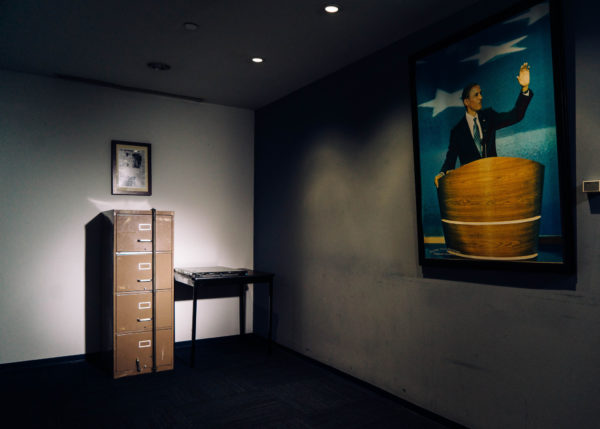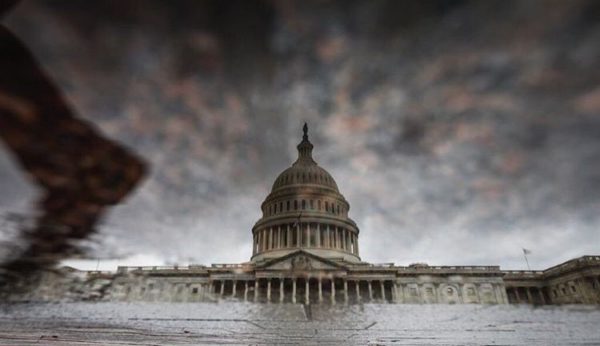Notes
The Eventful Photo Leading NYT Election Hacking Story

Yesterday’s NY Times investigative story on Russia’s hacking of the Democrats and the 2016 election is incredibly thorough. The reporters go into intricate detail about the machinations of the attacks on the DNC and the Clinton campaign. At the same time, true to the adage of a picture’s weight in words, the photo of this historical artifact leading the article goes a long way in tackling the “how.”
In two different images in the article’s original online version, we’re offered a most ironic scene. One of the captions reads:
A filing cabinet broken into in 1972 as part of the Watergate burglary sits beside a computer server that Russian hackers breached during the 2016 presidential campaign at the Democratic National Committee’s headquarters in Washington.
The photo invites different surface reactions: The breach was nothing new. Fool me once…. What the irony masks, however, is a more psychological explanation for how Russian hackers pulled this off. It’s so stealth that it’s hard to visualize still.

Simply put, people breaking into an office is physical. A cabinet is physical. Removing ceiling tiles and implanting a listening device is physical. Certainly, the jimmying of a file cabinet and the marks it leaves on that container is physical. A server, on the other hand, is magical. It’s so magical, in fact, it’s odd to physically contemplate the box at all. Instead, what these devices conjure is remote, symbolic, abstracted in mystery warehouses or somewhere up in the cloud/s.
It is the virtual nature of information today that makes us so gullible when it comes to security. Just like the guy the FBI kept calling at the DNC. This vulnerability is so profound to the ever-so-concrete-mind, it actually bears repeating that electrons and pixels are just as tangible as the paper that once filled that metal cabinet. This disconnect is what hackers bank on. So the photo is a helpful way of appreciating that the two acts weren’t different in kind. Even still, the fact these criminal violations and potentially history-altering acts all occurred through the air and through code remains obtuse. Otherwise, you would have looked at the comparison and visualized the burglars carting off dozens and dozens of file cabinets, filling truckload after truckload of documents, and then coming back several more times, not just in the dark but in broad daylight.
(photos: Justin T. Gellerson for The New York Times. caption 2: Justin T. Gellerson for The New York Times. caption 2: The break-in at the D.N.C. 44 years ago involved burglars who planted listening devices and jimmied this filing cabinet. In 2016, the burglary was conducted from afar, directed by the Kremlin, with spear-phishing emails and zeros and ones.)
UPDATE: The second photo in our post ran in an earlier version of the New York Times story, it has since been removed. The New York Times correction, “December 13, 2016 Editors’ Note: An earlier version of the main photograph with this article, of a filing cabinet and computer at the Democratic National Committee headquarters, should not have been published. The photographer had removed a framed image from the wall over the filing cabinet — showing a Washington Post Watergate front page — because it was causing glare with the lighting. The new version shows the scene as it normally appears, with the framed newspaper page in place.”
We have elected to retain the second photo in our post along with this update because it provides a closer view of the damage to the cabinet from the original break-in.


Reactions
Comments Powered by Disqus